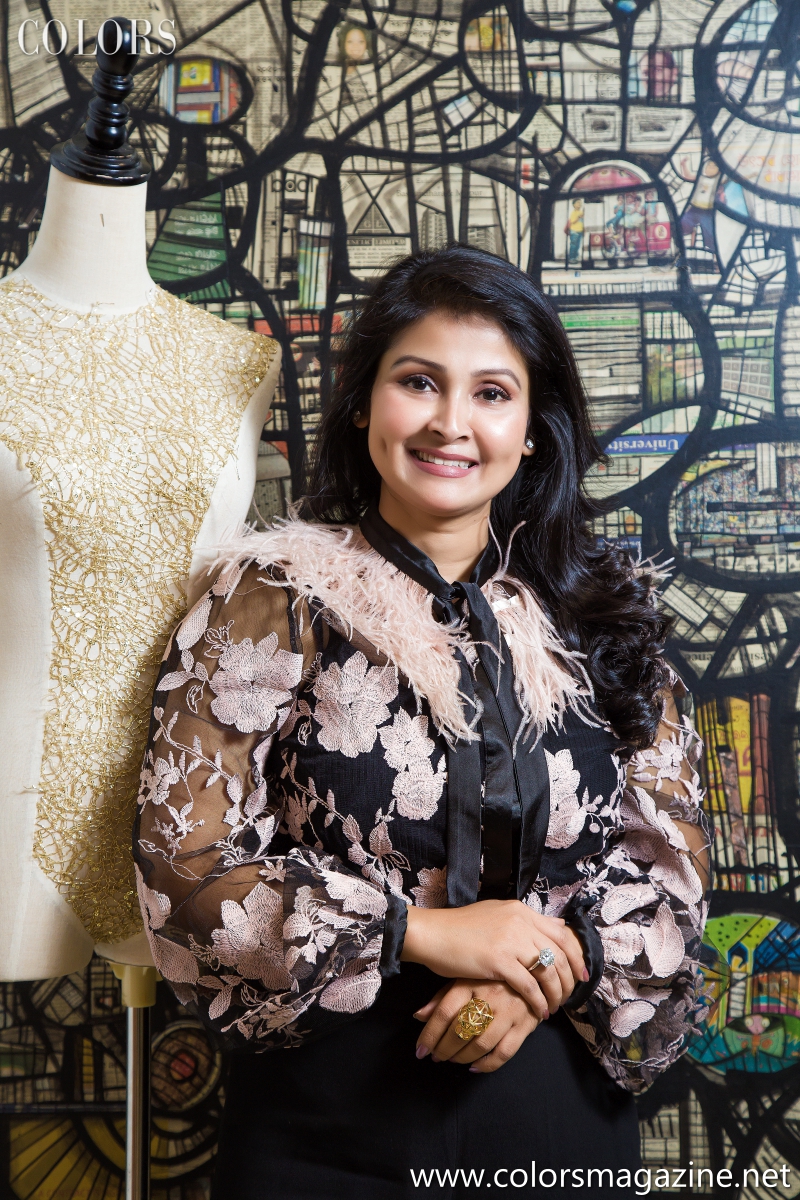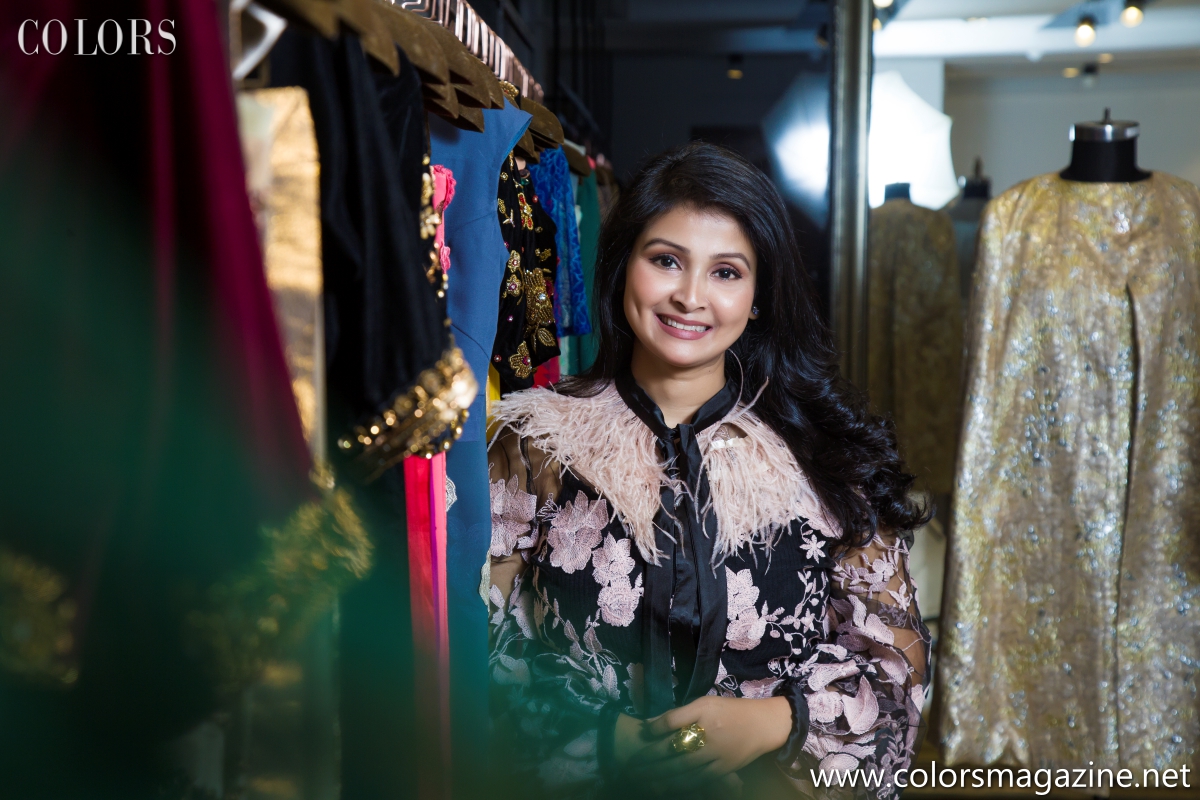A Global Citizen with a Bengali Heart
“Couture” translates to “dressmaking” in French. In a world rocked by high-end fashion, Asma Sultana straddles her Bangladeshi roots and couture. Nusrat Noshin has a tête-à-tête with the couturier and puts her journey with Zoan Ash in context.

I walk into the atelier. The muted hues of nudes, blacks and grays, and the sophistication of silk and fur in the decor all around, set the tone of the rendezvous. There, emerges the radiant Asma Sultana. All decked out in a feather lined, black Muslin top; her demeanor was nothing short of an A-list actress. She all smiles as she extends her hand for a prompt handshake. Our greeting is followed by an endearing invite to the private lounging area.
We sit under a grand, black chandelier. She starts off by narrating her journey as a fashion entrepreneur. “My husband and I started our journey with Ecstasy in 1997. Back then, fashion was somewhat criminal and fashion-forward concepts were frowned upon. Least to say, we grappled with the odds of building a foundation of fashion pioneering.”
She pauses and asks with the utmost decorum if she can digress from Zoan Ash and talk about her career in fashion for a bit. A request I couldn’t drop. “About 10 years down the line, we founded ZarZain. It is our local, ready-to-wear line, named after my two older daughters. I had a penchant for designing my own wardrobe. My clothing always carried a unique flare that way, and my friends would ask me to capitalize on that. The thought of Zoan Ash resided in my mind for a while, but I didn’t take any initiative. I was too busy running my existing businesses.” She reminisces.
She continues. “Soon after the birth of my third daughter, Zoana, I decided to pursue the vision of starting a couture brand. A brand that would not be limited to national boundaries, or conform to the orthodox ideas of couture. Zoan Ash is named after my youngest child and my own name. The idea behind it was to change the perception of Bangladeshi fashion designers on an international level. Bangladeshis have unparalleled craftsmanship. We make garments for so many MNCs but we are only dubbed as the labors. Our heritage rich traditions, culture and lifestyle reflect on our works. Yet we aren’t deemed as original or talented.”
“Zoan Ash strives to put forth the heritage of Bangladesh.” She states. “We attempt to marry heritage fabrics like Jamdani or Katan to western silhouettes. That way, fashion enthusiasts worldwide can celebrate our culture whilst easily embracing the cut. Yes, I could have used imported and expensive clothes, but that would not have authenticity. Jamdani, Katan, etc. are our bequests, with no refutations. They are rich, don fine artistry and tell our story. It’s so much more meaningful and true to ourselves.”
Mrs. Sultana then proceeds to discuss the international acclaim her couture has received. “Actually, if you have a vision, things somehow fall into place. In 2015, an LA-based designer got wind of my work and came down all the way to Bangladesh to meet me. He proclaimed my atelier was nothing less than Versace.” She says with a refined chuckle. “I got a gracious invite to the Emmys in 2016 and was lucky enough to design for the gorgeous Rihanna. In 2017, I had a set on the New York Fashion Week, at Madison Square Garden. Then, in 2018, Zoan Ash partook in the 7th anniversary of Jessica Minh Anh’s ‘Catwalk on Water’ Paris show. Almost immediately after that, I was invited to take part in the world’s longest fashion show. It’s set to break the Guinness Book of World Record with a showtime of 24 hours and 28 seconds. The show will take place in April 2019.”

She gives her two cents on the current landscape of the Bangladeshi fashion scene. “What I learned from these experiences is that the world wants to accept Bangladeshi designers. Every time someone would learn that I am a Bangladeshi, they’d be appreciative and encouraging. I think us Bangladeshis are too meek to test the waters and venture into this realm. We don’t comprehend the full spectrum of the opportunities out there. I have been in the industry for 21 years and I struggle almost every day because we are still off the radar.”
She ends the interview with a brief overview of her line for the upcoming show and her future plans. “The women who have inspired me since birth are the heart of this line. I used desi nuances of Nakshikatha and pure silk, and added sequins and feather to take it up a notch. The villager’s hand stitch the Nakshikatha. It portrays elements of their lifestyle like village circuses, fairs, farmers harvesting their crops and such. I’d like to think of myself as a global citizen. Merging horizons and breaking boundaries is quintessential to the purpose of Zoan Ash. That is the best way to describe my work. As for the future, I don’t come with a plan. What’s left to be achieved dwarfs everything I have accomplished thus far. I still have a long way to go.”




